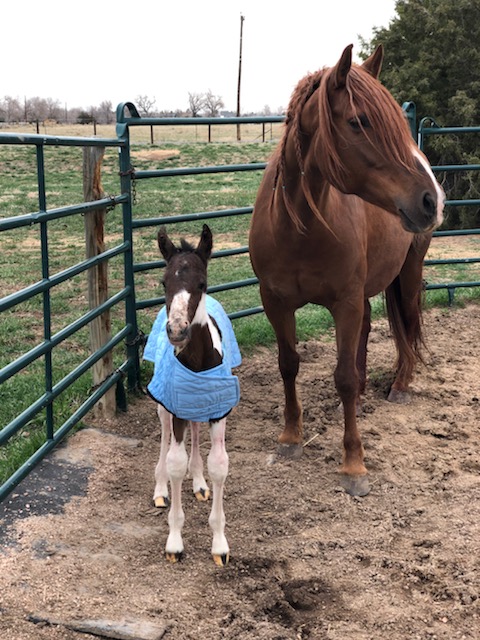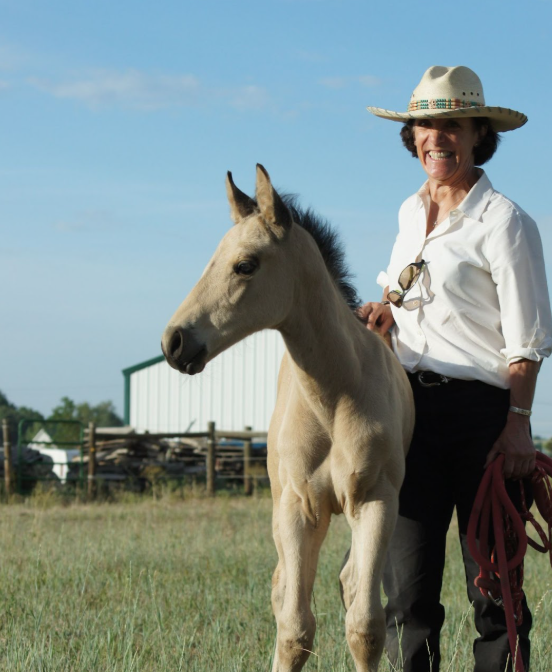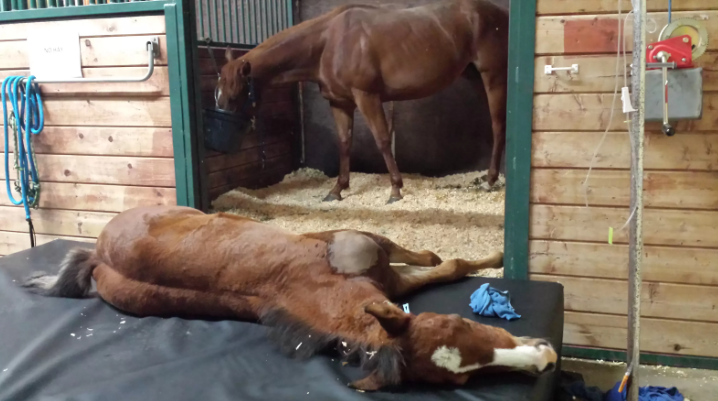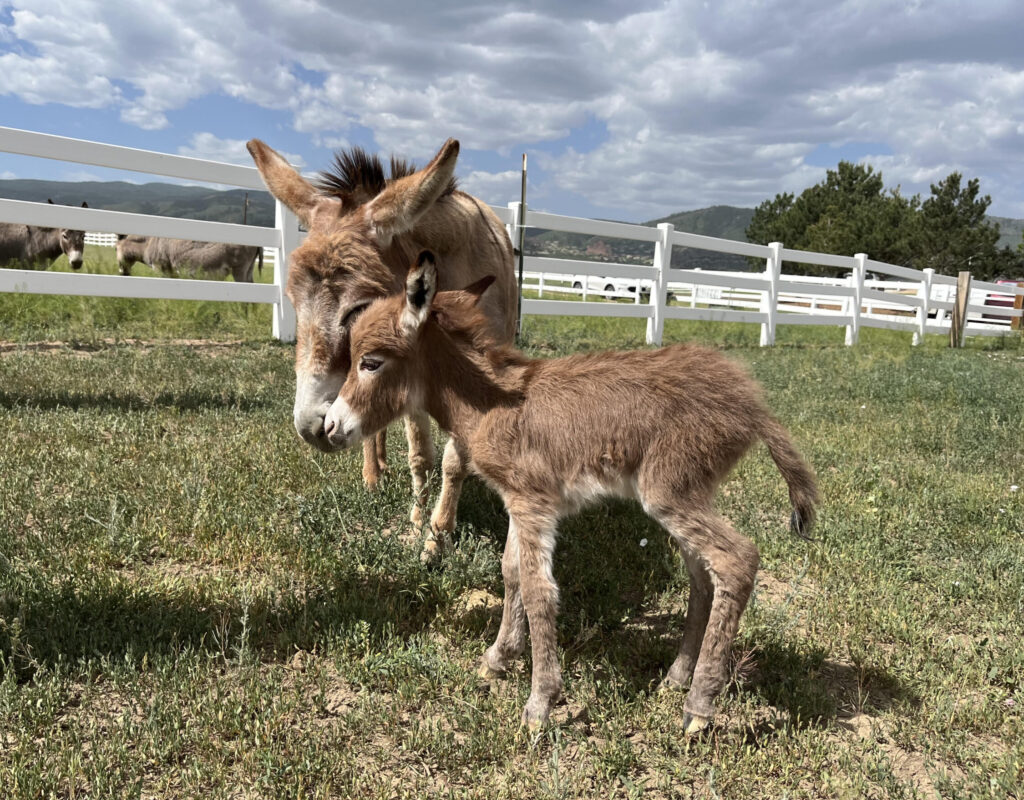Historically, mares have the lowest conception and birth rates of any domestic species, averaging approximately 60-70%. Properly managed mares typically require an average of two heat cycles per conception. Breeding horses can be expensive, so good mare management is one of the best investments you can make. The following practices can help maximize your mare’s reproductive function.
—
EVALUATING YOUR MARE
History – When purchasing a mare, try to gather as much of the following information as possible. Keep in mind that management plays a significant role—a completely normal mare who has been mismanaged may not have been given a fair chance.
- Current Status
- Previous Foalings
- Dystocia (difficult births)
- Sick or premature foals
- “Red bag” foaling (premature placental separation)
- Retained placenta
- Early Embryonic Loss or Abortion
- Was the cause identified?
- Length of Estrous Cycle
- A normal cycle is 21 days.
- A shortened cycle may indicate endometritis (inflammation of the uterine lining).
- A lengthened cycle suggests the mare is conceiving but experiencing early embryonic loss.
- Importance of teasing: Regular teasing helps track her cycle.
- Conformation “Back There”
- Tipped vulva: Can lead to fecal aspiration.
- “Wind sucker” (pneumo-vagina)
- Reddened mucosa
- Sucking noise when vulvar lips are parted
- Frothy or foamy vaginal fluid
- Urine pooling (noted during speculum exam or on AI sleeve)
- Does she need a caslicks procedure?
- How’s her cervix? A tight seal is necessary to maintain pregnancy.
- Cervical lacerations are most common in older mares.
- Speculum exam
- Assess via speculum and digital exams to identify scarring, lacerations, or adhesions.
DIAGNOSTICS
- Culture and Cytology
- Most farms require a negative culture and cytology before bringing your mare to be bred. Positive results allow you to address issues at home with your veterinarian.
- Cytology slides identify the presence of neutrophils (inflammatory cells), indicating infection.
- Cultures identify bacteria collected on the swab, often including a list of effective treatments.
- A positive culture result without neutrophils on cytology is likely due to contamination during collection. *Always perform cytology at the time of culture.*
- Biopsy
- The most objective method for assessing a mare’s ability to carry a foal to term.
- A biopsy instrument is inserted through the cervix into the uterus to collect a sample.
- The sample is evaluated under a microscope for scarring, glandular function, and inflammation.
- Interpretation is affected by the stage of the estrous cycle, time of year, mare’s age, and reproductive history.
- Ultrasound
- Performed alongside rectal palpation.
- Detects uterine fluid: Any fluid other than a minimal amount on ovulation day is concerning and requires treatment.
- Enables early twin detection and reduction.
- Identifies uterine cysts: These only pose a problem if they prevent the conceptus from moving freely.
- Measure and note cyst locations to avoid interference with early pregnancy diagnosis.
Note: Cystic ovaries are a cattle condition, not a horse condition.
NUTRITION
- Third Trimester
- The mare’s weight increases by 9-12%.
- Energy needs increase progressively by 10-20%.
- Calcium and phosphorus requirements double.
- Protein needs increase from 8% to 11% at a rate of 1% per month.
- Know the protein content of your hay; if less than 11%, supplement with Calf Manna or another high-quality protein source.
- Total feed intake increases by 5% per month.
- Older Mares
- Feed a highly digestible, nutrient-dense feed.
- Studies show older mares fed Equine Senior (or similar feed) ovulate an average of two weeks sooner than those fed only oats.
- Avoid Obesity
- Non-lactating mares are most fertile when on an increased rate of gain, not already fat.
- Lactating Mares
- Monitor weight to keep her between fat and thin.
- Hard-keeping mares can be fed free-choice alfalfa or legume-rich forage plus a high-quality broodmare grain mix.
- Underweight mares may struggle to conceive until the foal is weaned.
- Some veterinarians recommend beta-carotene injections six weeks prior to breeding and at least 50 IU of supplemental vitamin E.
VACCINATION
- Rhino vaccine at 5, 7, and 9 months.
- Eastern, Western, and Tetanus vaccines in the spring.
- Note: Intra-nasal flu vaccine is not yet approved for pregnant mares.
THYROID
- Hypothyroidism impairs reproductive function and can lead to laminitis and a “cresty” neck.
- Blood tests measure T4 levels (thyroxine).
- No completely reliable test exists for horses; most are designed for humans or dogs.
- Results can be affected by bute administration, consumption of endophyte-infected fescue, or food deprivation.
- Many farms require normal T4 levels for mares coming in to be bred.
- Supplementation is available in pill or powder form.
ARTIFICIAL LIGHTING
Start November 15th with a 200-watt bulb 16 hours per day
- Lengthens the mare’s breeding season physiologically (April 15–August 15).
- Provides more breeding opportunities and time to address problems.
- Allows for earlier foaling dates.
- Be mindful of pecking orders in group-lit pens to avoid undue stress.
INDUCTION OF OVULATION
- Human Chorionic Gonadotropin (hCG)
- Administered when the follicle is >35 mm and the mare has been in estrus for 2-3 days.
- Ovulation occurs around 36 hours.
- Gonadotropin-Releasing Hormone (GnRH)
- Administered when the follicle is >35 mm and the mare has been in estrus for 2-3 days.
- Subcutaneous implant.
- Ovulation occurs in 40-48 hours.
- Ordering Semen
- Call for semen when a dominant follicle reaches 35-40 mm in diameter.
- Use hCG or GnRH to induce predictable ovulation.
SEMEN EVALUATION
- Ensure all equipment (slides, cover slips, pipettes, microscope stage) is at 37°C, as motility varies greatly with temperature.
- Gently stir the semen and place a drop on a pre-warmed slide. Cover with a cover slip and leave on a slide warmer or in an incubator for 30-60 seconds.
- Examine under a microscope for forward motility on a percentage basis.
SOME SURE-FIRE SUGGESTIONS
- Normal fertile mares cycle every 19-28 days, with heat lasting 5-7 days.
- Keep written records to establish your mare’s normal cycle for better prediction.
- Foaling mares typically come into heat 7-14 days post-foaling, with the next heat around 30 days after birth.
- Mares with foals may be harder to tease due to protective behavior.
- Genital tract infections are common in maiden and foaling mares.
- A sloping vulva predisposes mares to infections.
- Older mares are more prone to uterine changes and infections.
- Hormonal imbalances, such as persistent corpus luteum or prolonged estrus, can also occur.
- Mares failing to conceive after three cycles may need a uterine biopsy.
- these mares are usually Windsuckers: mares with sloping vulvas, mares who have aborted more than once, mares barren for a year, mares who cycle irregularly during the normal breeding season, and mares with persistent uterine infections.
- Make sure changes in feed, pasture, and exercise are gradual to help avoid additional problems.
- Supplemental progesterone may be necessary to prevent abortion in some mares.
HOW DO I CARE FOR MY PREGNANT MARE?
1. Have your mare palpated 18-21 days post-breeding to confirm pregnancy. If no ultrasound is available, palpate by 35 days to rule out twins. Recheck at 30 and 55-60 days to confirm viability.
2. Consult your veterinarian for a tailored care program, including safe deworming and vaccination schedules. Never deworm the mare during the first 90 days, or during the last month of pregnancy.
3. Provide light exercise throughout pregnancy, such as pasture turnout or light riding.
-
- Avoid severe stress or shipping, which can cause dehydration and fetal loss.
Feel free to call with any questions!




